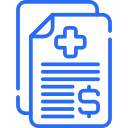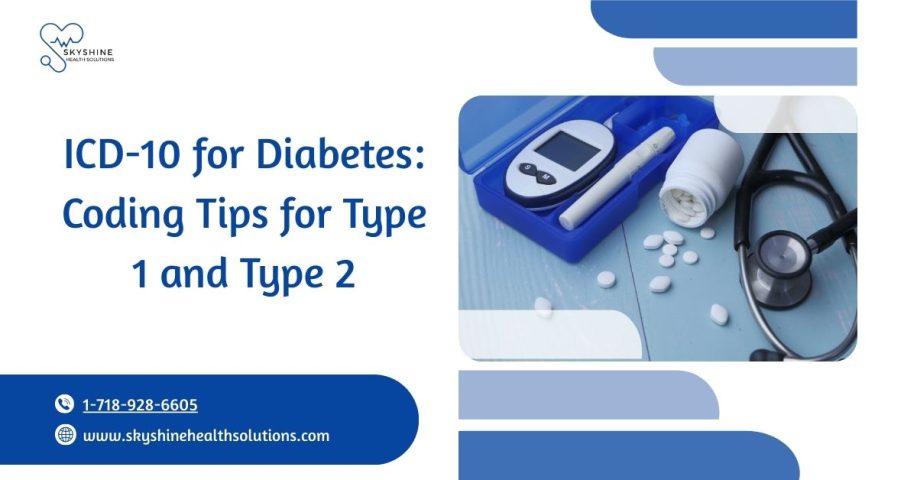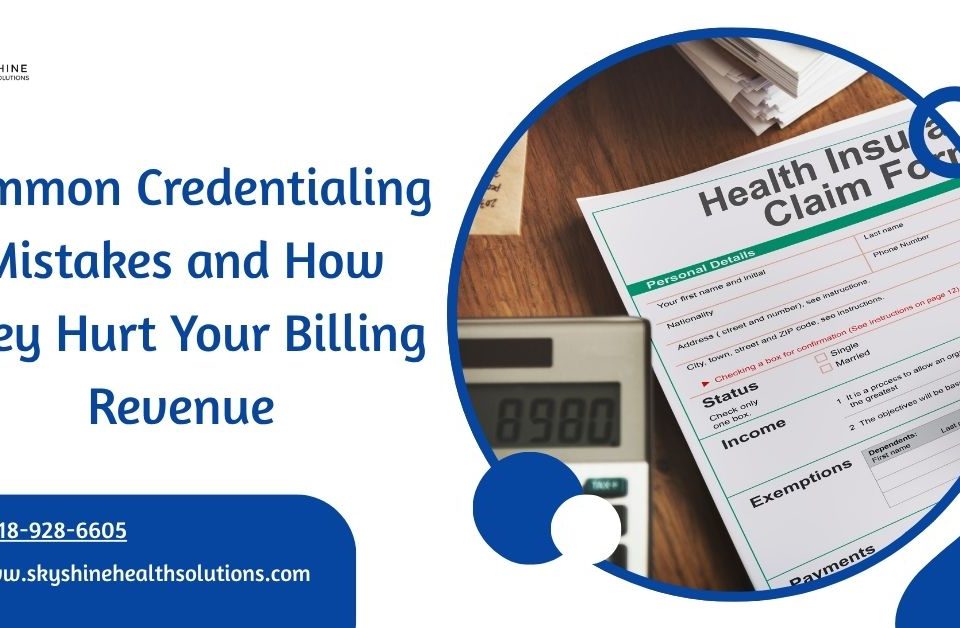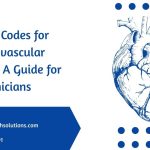
ICD-10 Codes for Cardiovascular Diseases: A Guide for Clinicians
August 11, 2025
ICD-10 Codes for Infectious Diseases: COVID-19 and More
August 25, 2025Millions get affected by Diabetes globally, with Type 1 and Type 2 being the most common. Accurate ICD-10 coding for diabetes is crucial for doctors and coders that supports insurance claims, tracks disease progression, and informs treatment plans. The International Classification of Diseases, 10th Revision (ICD-10-CM), assigns diabetes E08-E13 codes . This guide simplifies coding for Type 1 and Type 2 diabetes, highlights common complications, and provides practical tips to avoid coding errors, ensuring compliance with HIPAA and CMS guidelines.
Key ICD-10 Codes for Type 1 and Type 2 Diabetes
The E08-E13 chapter covers diabetes and related conditions. Following are important codes for Type 1 and Type 2 diabetes:
-
-
E10.9: This code is used when someone has Type 1 diabetes and no complications are noted.
-
E10.21: This is for Type 1 diabetes with kidney damage (diabetic nephropathy).
-
E10.65: This code is for Type 1 diabetes with high blood sugar levels (hyperglycemia)
-
-
-
E11.9: This code is used when someone has Type 2 diabetes and no complications are present.
-
E11.40: This is for Type 2 diabetes with nerve damage (neuropathy), but the type of nerve damage isn’t specified.
-
E11.621: This code is for Type 2 diabetes with a foot ulcer.
-
-
-
E11.22: This code is for Type 2 diabetes with kidney disease. You need a separate code to describe the stage of the kidney disease, such as N18.3.
-
E10.42: This is for Type 1 diabetes with nerve damage in the hands and feet (diabetic polyneuropathy).
-
Best Practices for Accurate Diabetes Coding
To get payments and follow the rules better, doctors and coders should do the following:
-
-
Write clearly about the type of diabetes, any complications, and how well the blood sugar is controlled.
For instance, instead of just saying “diabetes,” write “Type 2 diabetes with eye problems (retinopathy). -
Write about all related issues like nerve damage, sores, or kidney disease to agree with the codes that cover more than one condition.
-
Include codes for things that affect diabetes care, like being overweight (E66.9) or smoking (Z72.0).
-
Stay updated as CMS updates ICD-10 codes annually. For example, new codes for diabetes-related eye conditions were added recently.
-
Work with medical coders to make sure the notes support the codes used, which helps prevent claim rejections.
-
Common Coding Challenges and Solutions
-
-
Unclear documentation, such as “diabetes” without mentioning Type 1 or Type 2.
-
Solution: Use lab results (e.g., C-peptide levels) and patient history to confirm the diabetes type and select precise codes.
-
-
Not writing complications, like diabetic nerve damage or foot ulcers, in the medical record.
-
Solution: Perform full exams and document all complications to support codes like E11.40 or E11.621.
-
-
Choosing the wrong code for whether the diabetes is under control or not.
-
Solution: Write clearly about blood sugar levels (like hyperglycemia, E11.65) to prevent using wrong coding.
-
-
How Accurate Coding Improves Patient Care
Understanding ICD-10 codes for diabetes helps doctors and coders to improve documentation, streamline billing, and enhance patient care. Precise ICD-10 coding enhances care coordination. For example, coding E11.51 for Type 2 diabetes with peripheral angiopathy ensures specialists understand vascular complications and guiding treatment. Accurate coding also supports population health studies, such as tracking diabetes commonness, which informs preventive strategies. Start refining your documentation practices today to ensure compliance and optimize care delivery.
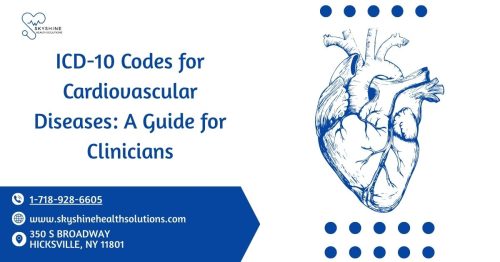
Learn more on ICD-10 Codes for Cardiovascular Diseases: A Guide for Clinicians
Have questions? Visit Medical Billing FAQs . Learn People Reviews about us.

